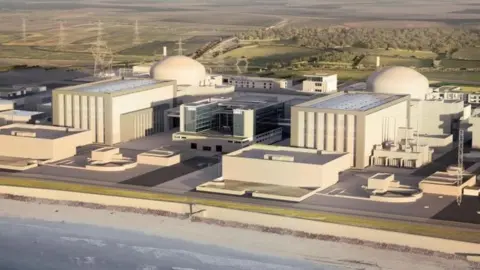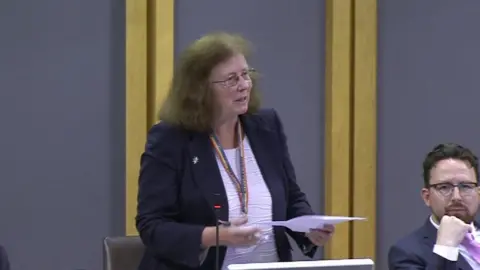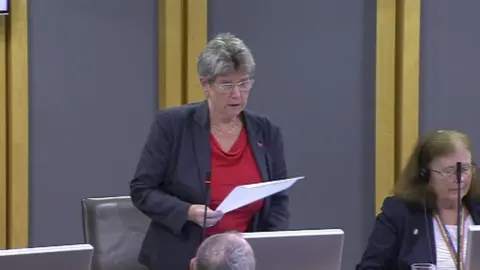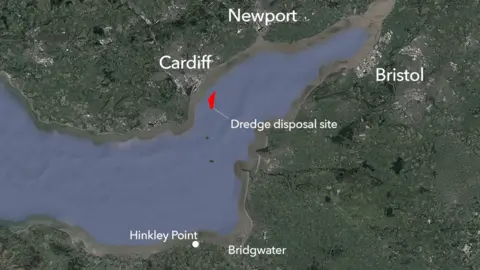Nuclear plant mud dumping worries raised by Labour AMs
 PA
PATwo senior Labour AMs have raised concerns in the Senedd about the dumping of mud from a nuclear plant site into the sea near Cardiff.
Julie Morgan and Jane Hutt - both close to leadership frontrunner Mark Drakeford - said constituents had safety worries about dredging 300,000 tonnes of mud from Hinkley Point.
Dumping began last week. AMs were told the mud poses no risk to human health.
Campaigners have called for more tests, and are seeking an injunction.
Ms Morgan and Ms Hutt quizzed Rural Affairs Secretary Lesley Griffiths following a topical question raised by independent AM Neil McEvoy.
The project to build the new Hinkley Point C nuclear power station in Somerset includes dredging mud and sediment from Bristol Channel near the sites of the decommissioned Hinkley Point A and B nuclear plants, and disposing of it just over a mile out to sea from Cardiff Bay.
Protestors want the licence from Natural Resources Wales (NRW) which permitted the dredging to be scrapped, amid worries the mud could be contaminated from discharges from Hinkley.

In the assembly on Wednesday, Cardiff North AM Julie Morgan asked why the dumping site was chosen "when it's only two kilometres from the shore", and what the benefits to south Wales were.
"There is concern about the safety in Cardiff," she said.
"We should do all we can to explore to whatever ends we can to - if necessary - reassure people it is safe."
"I'm anxious that any further scientific evidence that could be obtained is obtained," she said.
Ms Griffiths said the Welsh Government had ensured a "significant range" of documentation had been released by NRW to reassure the public.

Vale of Glamorgan AM Jane Hutt - a former Welsh Government minister - questioned the lack of an environmental impact assessment (EIA), and said constituents had raised concerns about "inadequate sampling of deeper layers of mud".
Ms Griffiths said the lack of an EIA did not mean a "full and through environmental assessment was not undertaken".
"A radiological assessment was carried out and was supported by experts," she said, adding that an EIA was carried out on the overall Hinkley Point C project.

The topical question had been raised by independent AM Neil McEvoy, who asked if Ms Griffiths would back calls for answers from scientists about the number of cooling pond accidents he said could have resulted in "significant amounts of uranium and plutonium in the mud being dumped".
He demanded new tests. Ms Griffiths said she was unable to comment because of the ongoing legal process.
But she added that a recent committee report found that all tests and assessments found the material "was within safe limits, poses no radiological risk to human health" and was "safe to be disposed of at sea".
